A highly poisonous plant with an inconspicuous appearance. However, the European hazelwort (Asarum europaeum) can easily be confused with the lesser celandine.
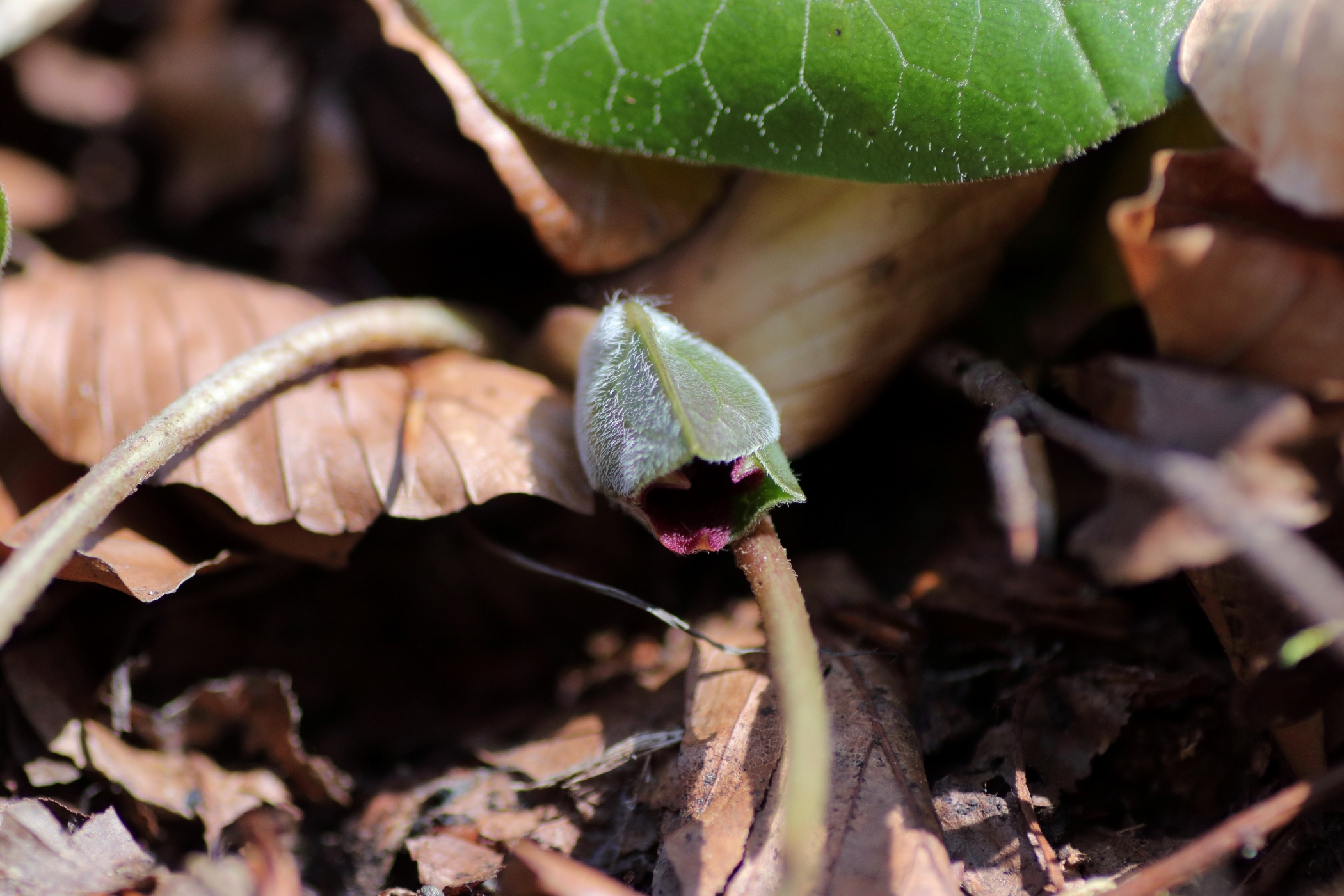
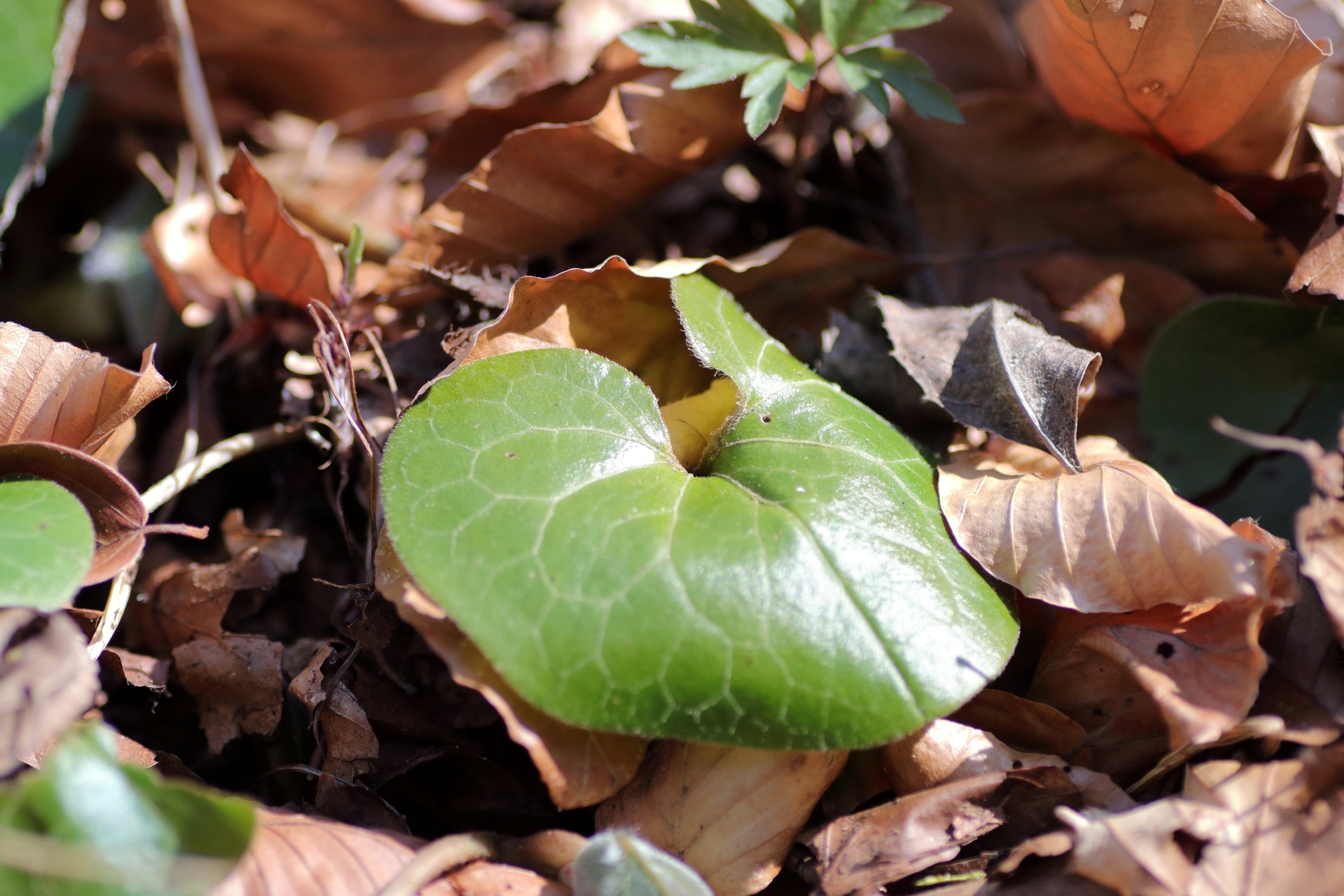
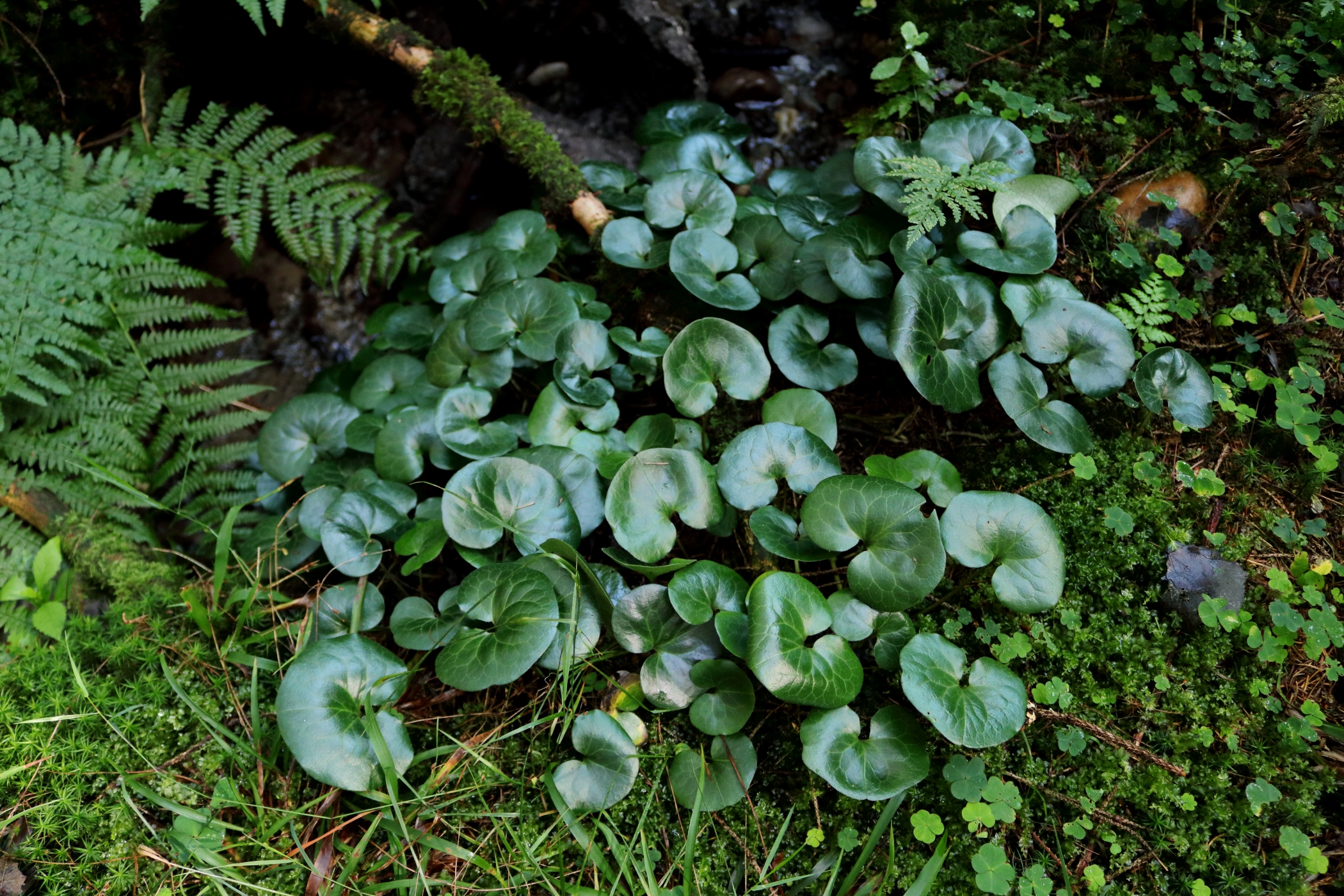
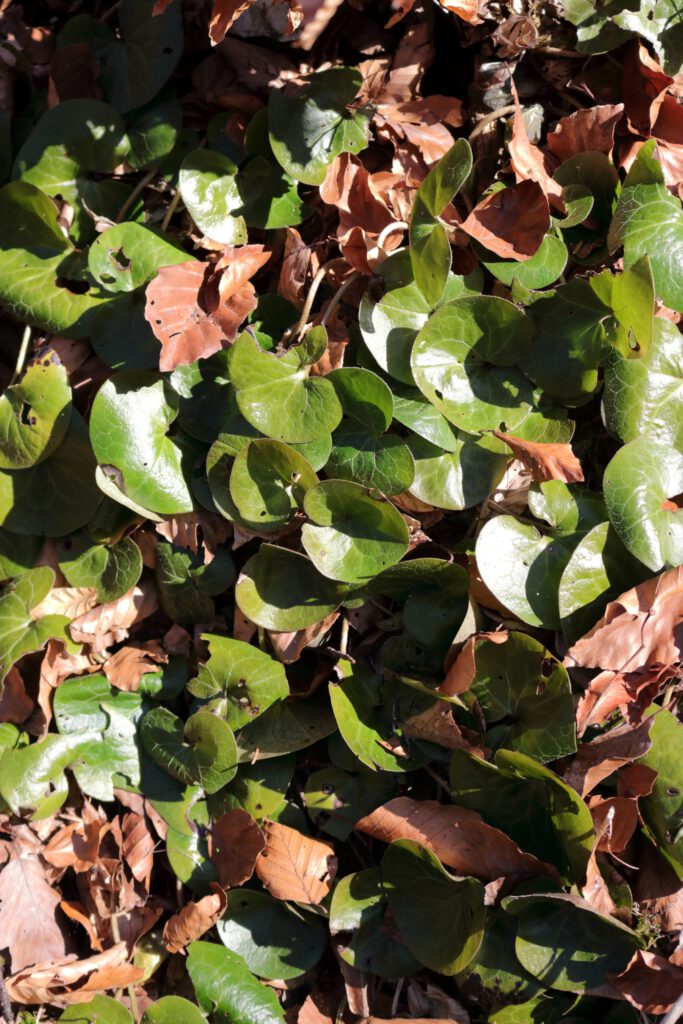
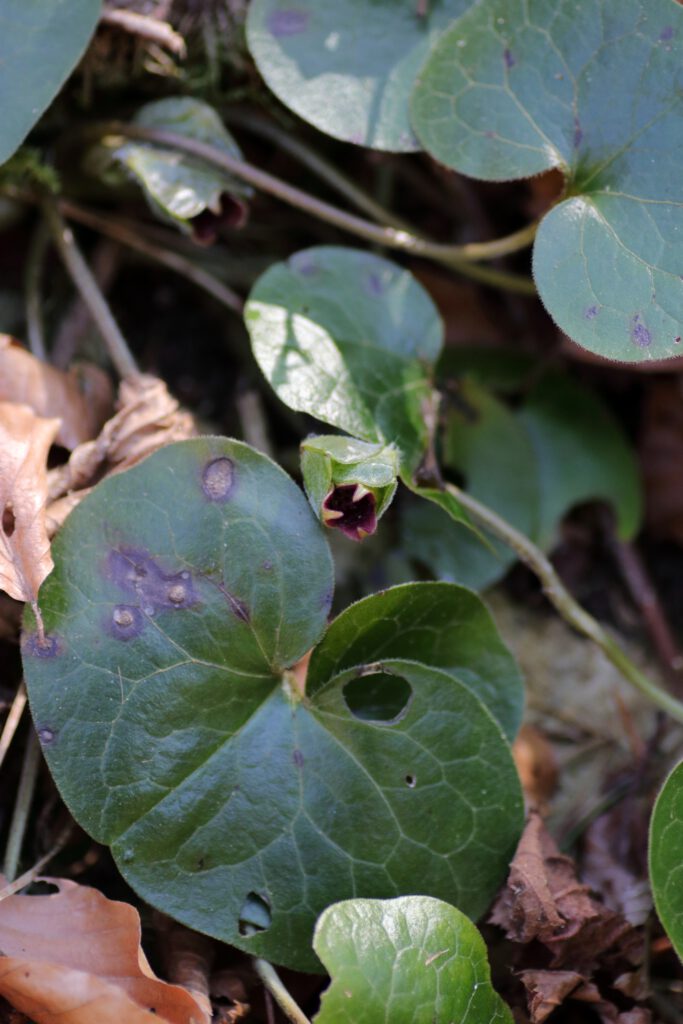
~ strong poisionous plant ~
Occurrence and distribution: The european hazelwort is mainly found in deciduous forests, mountainous and shady bushes, hazel bushes. The plant grows on humus-rich, calcareous soil. In Europe, it is common in Central and Eastern Europe, but rather rare in Northern Europe.
Plant description
Growth type: The plant is a perennial hemicryptophyte. This means that the plant forms an overwintering bud just above the ground. The plant reaches a growth height of approx. 5 to 10 cm. Only two wintergreen leaves are formed per plant. The stem grows creeping above the ground.
Leaves: The leaves are rounded-kidney-shaped and have a dark green colour. They reach a size of approx. 3 to 10 cm. The stem and underside of the leaves are covered with fine hairs.
Flowers: The flowers sit individually under the leaves. They have a short stalk. The flowers are radial / bell-shaped and the inflorescence is three-parted. The flower colour ranges from green on the outside of the flowers to brown-red on the inside. The outside of the petals is also clearly covered with hairs. The flower scent is peppery / in some books this is also described as camphor-like. The flowers are pollinated by fungus flies, as they are attracted by the scent. The flowering period lasts from
March until April.
Fruits: After flowering, the ovaries develop. These are six-fold and form a kind of capsule fruit. Numerous seeds are formed in this. A small elaiosome (oil body) is attached to these seeds. This is how the plant spreads through ants. The fruit ripens from June to August. The seeds are frost germinators.
Poisonous plant – tips for handling
Toxicity of the plant: The plant is a strongly poisonous. It contains skin-irritating essential oils in all parts of the plant. The proportion of ingredients can vary greatly. It is in no way suitable for consumption. In the past, the plant was also used for folk medicinal purposes. However, no healing effect of the plant has been proven! It is therefore strongly discouraged from any use!
Ingredients: α-asarone (skin irritant, pungent odour – in variable concentrations), trans-isomethyleugenol or trans-isoelemicin, sesquiterpene derivative.
Symptoms of poisoning: The poison causes irritation of the mucous membranes in the mouth and tongue. The essential oils contained in the plant can also cause sneezing. When consumed, the following unwanted reactions will occur: Vomiting, stomach and intestinal pain and diarrhoea. The leaves of the hazelwort can also cause rashes on the skin. In case of a high dose / severe poisoning, death occurs due to respiratory paralysis.
First aid in case of poisoning: Seek medical attention immediately and inform the poison control centre!
Folk names & name origin *
Origin of the name: The name “hazelwort” can be explained in several ways. I will discuss the most important of these in more detail in the following section.
- The Latin part of the name “Asarum” is derived from the ancient Greek word “ásaron” – in english “branchless”. Reference can be made here to the book “Die Giftpflanzen Deutschlands” by Peter Esser published in the year 1859.
- Another explanation for “asarum” is derived from the ancient Greek word for carpet. This is because the plant forms a kind of carpet. – Source: The Book “Encyclopaedie der Naturwissenschaften” published in the year 1887.
- Plinius suggests that the origin of the word is a compound of the two ancient Greek words for “not” and “adorn”. The blossoms of the plant were not allowed to be used in wreaths. This is where the name came from. – Source: The Book “Encyclopaedie der Naturwissenschaften” published in the year 1887.
- Another explanation can be traced back to “DIOSCORIDES”. He gives the plant the name “asaron”. This is an ancient Greek word which, according to Dioscorides, can be translated as “disgust, discomfort”. This alludes to the vomit-inducing property. – Source: Spektrum.de
- In Hildegard von Bingen’s writings, the plant is found as “Haselwurtz” and “asarum” – Source: Altdeutsche Gartenflora by Fischer-Benzon published in the year 1839.
- The german name “Haselwurz” (hazelwort) is derived from the fact that the plant likes to grow under hazel bushes. – Source: Book “Die Giftpflanzen Deutschlands” by Peter Esser published in the year 1859.
Folk names: The plant was formerly known as “vulgago” or “vomiting hazelwort”. This refers to the effect of vomiting when the plant is ingested.
Endangerment of the plant
Endangerment of the plant: On the Red List for Germany, this species is classified as “non-endangered”.
Distribution-codes: A, AV, M1, M2, F, K
Annotations
*Note on the origin of the name: The plant is also included in the book Taschenlexikon der Pflanzen Deutschlands und angrenzender Länder. Here information is given on the origin of the plant’s name. Personally, I find this somewhat questionable. It is pointed out here that the origin of the Latin name cannot be completely proven. After my own research, I have to agree with this (in older literature, the origin of the plant’s name was not described uniformly).
The statement that the plant ‘beta leporina’ (today commonly known as “spotted arum / Arum maculatum”) is called ‘Hasenwurz’ (rabbitwort) in the Vienna Dioscorides by Pedanios Dioscorides also seems to be questionable.
In The Naming of Names: The Search for Order in the World of Plants the name ‘beta leporina’ is considered to be the roman proper name for ‘Arum maculatum’. This also describes the appearance of the plant. Arrow-shaped leaves are given as a characteristic. This is an unmistakable characteristic of the arum. It is therefore very unlikely that Pedanios Dioscorides was mistaken in his naming. Without seeing the original work / a copy, a final assessment is unfortunately not possible.
Further research on the origin of the name
Heinrich Marzell writes in his publication “Die Haselwurz in der alten Medizin: Eine Studie zur Geschichte einer deutschen Heilpflanze” (The hazelwort in ancient medicine: a study on the history of a German medicinal plant) that Dioscorides had already clearly described and drawn the plant. In this, Marzell also addresses the possibility of confusion with another plant. Albertus Magnus (around 1280) named the hazelwort after the shape of the leaves: “Roßhuf” (horse’s hoof). However, he also writes that the plant is popularly known as “vulgo” / “herba leporis”. This is said to have occurred because hares feed on the plants. However, Marzell rates this as very unlikely, as the plant has a pungent taste. He provides a plausible explanation for this error. For it is very likely that Albertus Magnus had the German name Haselwurz in mind and mistakenly derived this name from hares. – Source: https://www.jstor.org/